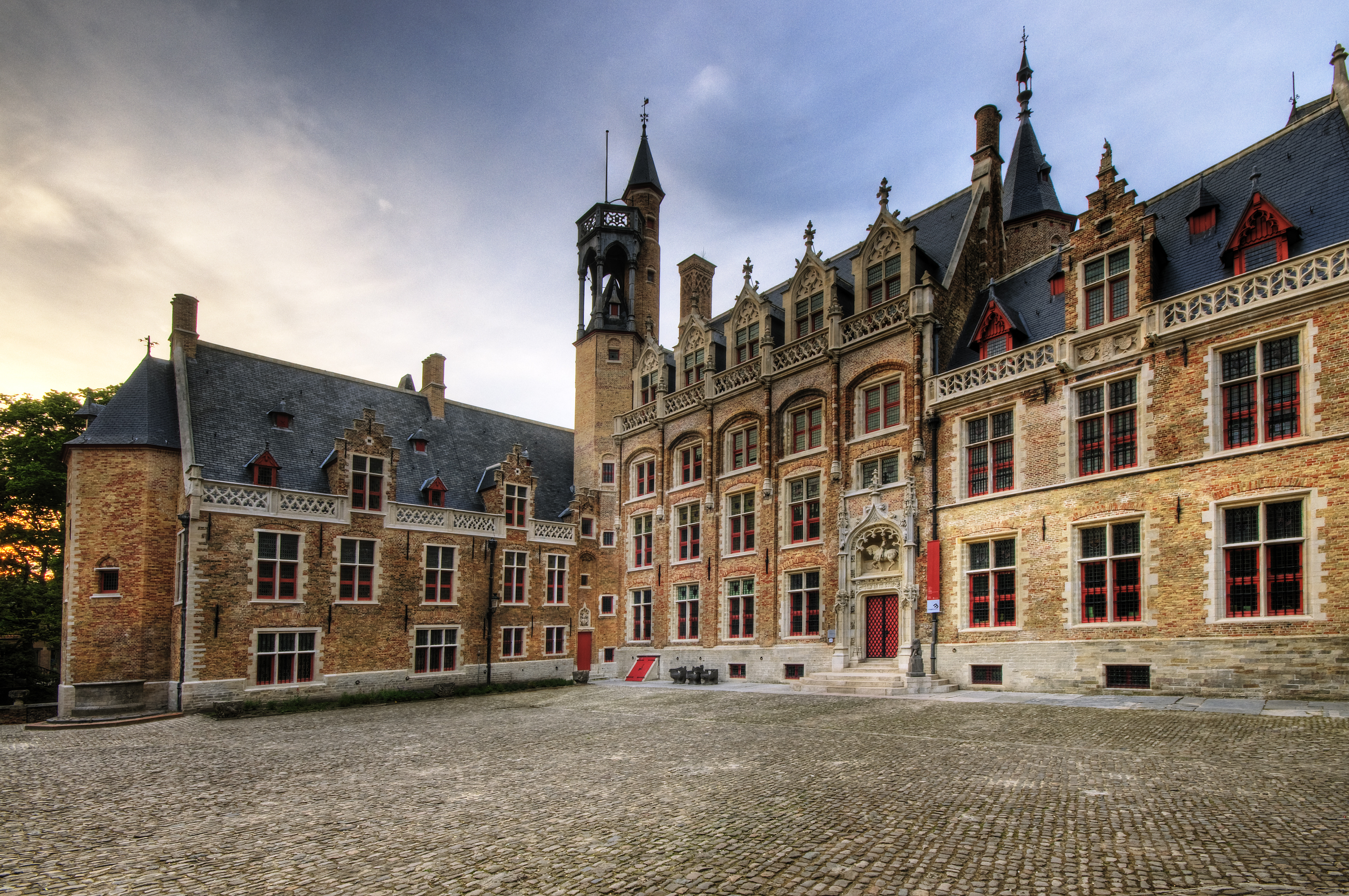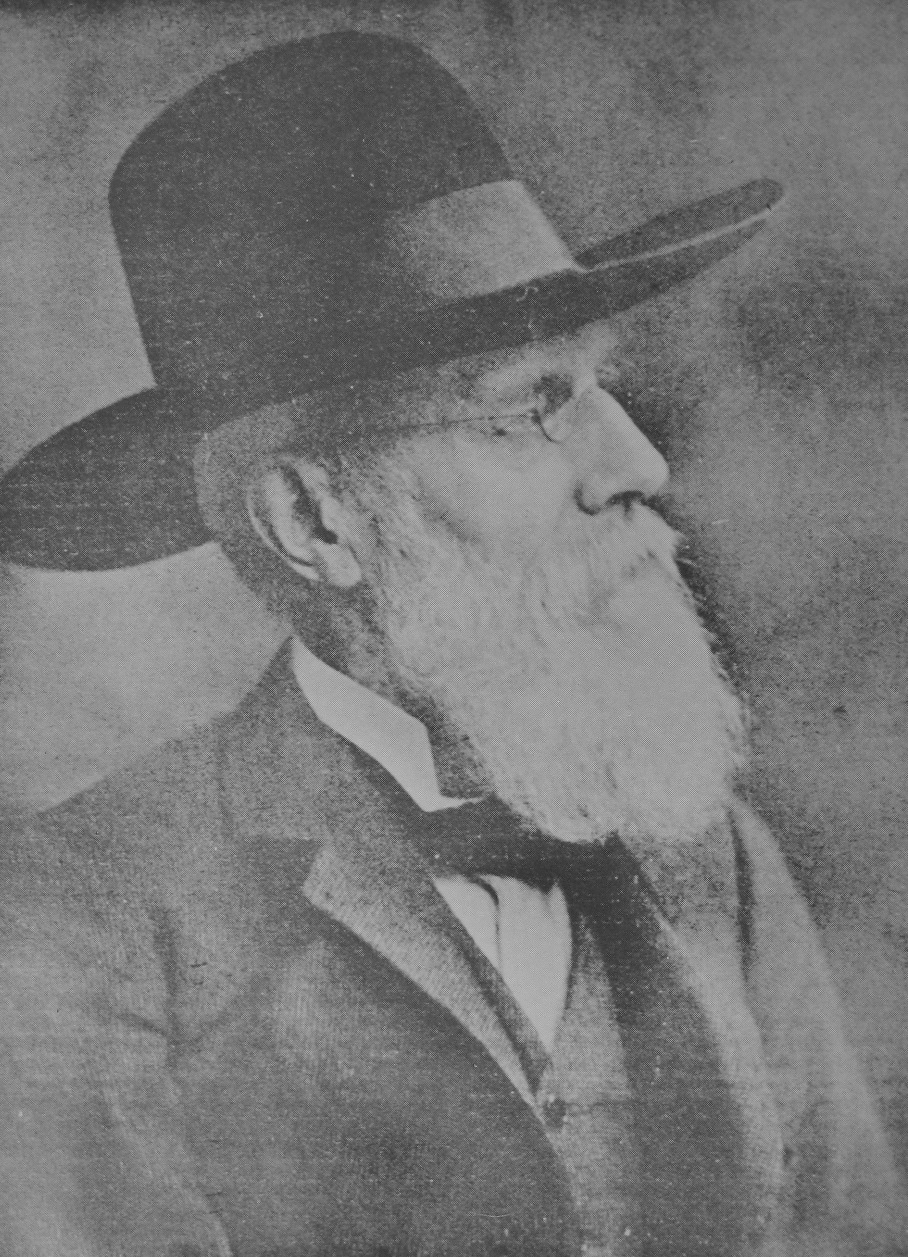|
Gruuthusemuseum
The Gruuthusemuseum is a museum of applied arts in Bruges, located in the medieval Gruuthuse, the house of Louis de Gruuthuse. The collection ranges from the 15th to the 19th century. The Gruuthuse Presumably in the 13th century a rich family from Bruges received the monopoly to levy taxes on gruit and built a structure to store it. The building was changed in the early fifteenth century by Jan IV van der Aa to a luxury house for his family, which subsequently changed its name to "Van Gruuthuse" ("From the Gruit house"). His son Louis de Gruuthuse added a second wing to the house and in 1472 a chapel. This connects the house to the adjacent Church of Our Lady, Bruges. In 1596, the house was bought by Philip II of Spain and in 1623 given to Wenceslas Cobergher to house the Bruges mount of piety. The city of Bruges bought the house in 1875, and architect Louis Delacenserie completely restored it between 1883 and 1895. The exterior is partly original, partly a reconstruction; the ... [...More Info...] [...Related Items...] OR: [Wikipedia] [Google] [Baidu] |
Bruges
Bruges ( , nl, Brugge ) is the capital and largest City status in Belgium, city of the Provinces of Belgium, province of West Flanders in the Flemish Region of Belgium, in the northwest of the country, and the sixth-largest city of the country by population. The area of the whole city amounts to more than 13,840 hectares (138.4 km2; 53.44 sq miles), including 1,075 hectares off the coast, at Zeebrugge (from , meaning 'Bruges by the Sea'). The historic city centre is a prominent World Heritage Site of UNESCO. It is oval in shape and about 430 hectares in size. The city's total population is 117,073 (1 January 2008),Statistics Belgium; ''Population de droit par commune au 1 janvier 2008'' (excel-file) Population of all municipalities in Belgium, as of 1 ... [...More Info...] [...Related Items...] OR: [Wikipedia] [Google] [Baidu] |
Brugge Gruuthuse R06
Bruges ( , nl, Brugge ) is the capital and largest city of the province of West Flanders in the Flemish Region of Belgium, in the northwest of the country, and the sixth-largest city of the country by population. The area of the whole city amounts to more than 13,840 hectares (138.4 km2; 53.44 sq miles), including 1,075 hectares off the coast, at Zeebrugge (from , meaning 'Bruges by the Sea'). The historic city centre is a prominent World Heritage Site of UNESCO. It is oval in shape and about 430 hectares in size. The city's total population is 117,073 (1 January 2008),Statistics Belgium; ''Population de droit par commune au 1 janvier 2008'' (excel-file) Population of all municipalities in Belgium, as of 1 January 2008. Retrieved on 19 October 2008. [...More Info...] [...Related Items...] OR: [Wikipedia] [Google] [Baidu] |
Conrat Meit
Conrad Meit or (usual in German) Conrat Meit (1480s in Worms; 1550/1551 in Antwerp) was a German-born Late Gothic and Renaissance sculptor, who spent most of his career in the Low Countries. The royal tombs that were his largest works still had elaborate Late Gothic architectural frameworks by others, but Meit's figures were Renaissance in conception and style. Meit's work, with its delicately worked plasticity and pronounced corporality, brought an entirely new form of expression to Late Gothic church sculpture. The anatomy of his nude figures draws more from Albrecht Dürer than from classical sculpture. Later many of his works in Brussels, Antwerp, Tongerlo Abbey, and elsewhere were destroyed in the Reformation and French Revolution, leaving the three royal monuments at the then newly built Royal Monastery of Brou, Bourg-en-Bresse, as his outstanding surviving large works. A number of small works, including portrait busts in wood, and small statuettes in various materials h ... [...More Info...] [...Related Items...] OR: [Wikipedia] [Google] [Baidu] |
Charles V, Holy Roman Emperor
Charles V, french: Charles Quint, it, Carlo V, nl, Karel V, ca, Carles V, la, Carolus V (24 February 1500 – 21 September 1558) was Holy Roman Emperor and Archduke of Austria from 1519 to 1556, King of Spain (Crown of Castile, Castile and Crown of Aragon, Aragon) from 1516 to 1556, and Lord of the Netherlands as titular Duke of Burgundy from 1506 to 1555. He was heir to and then head of the rising House of Habsburg during the first half of the 16th century, his dominions in Europe included the Holy Roman Empire, extending from Kingdom of Germany, Germany to Kingdom of Italy (Holy Roman Empire), northern Italy with direct rule over the Austrian hereditary lands and the Burgundian Low Countries, and Habsburg Spain, Spain with its southern Italy, southern Italian possessions of Kingdom of Naples, Naples, Kingdom of Sicily, Sicily, and Kingdom of Sardinia, Sardinia. He oversaw both the continuation of the long-lasting Spanish colonization of the Americas and the short-live ... [...More Info...] [...Related Items...] OR: [Wikipedia] [Google] [Baidu] |
Bobbin Lace
Bobbin lace is a lace textile made by braiding and twisting lengths of thread, which are wound on bobbins to manage them. As the work progresses, the weaving is held in place with pins set in a lace pillow, the placement of the pins usually determined by a pattern or pricking pinned on the pillow. Bobbin lace is also known as pillow lace, because it was worked on a pillow, and bone lace, because early bobbins were made of bone or ivory. Bobbin lace is one of the two major categories of handmade laces, the other being needle lace, derived from earlier cutwork and reticella. Origin A will of 1493 by the Milanese Sforza family mentions lace created with twelve bobbins. There are two books that represent the early known pattern descriptions for bobbin lace, ''Le Pompe'' from Venice and ''Nüw Modelbuch'' from Zürich. Bobbin lace evolved from passementerie or braid-making in 16th-century Italy. Genoa was famous for its braids, hence it is not surprising to find bobbin lace de ... [...More Info...] [...Related Items...] OR: [Wikipedia] [Google] [Baidu] |
William Curtis Brangwyn
William is a masculine given name of Norman French origin.Hanks, Hardcastle and Hodges, ''Oxford Dictionary of First Names'', Oxford University Press, 2nd edition, , p. 276. It became very popular in the English language after the Norman conquest of England in 1066,All Things William"Meaning & Origin of the Name"/ref> and remained so throughout the Middle Ages and into the modern era. It is sometimes abbreviated "Wm." Shortened familiar versions in English include Will, Wills, Willy, Willie, Liam, Bill, and Billy. A common Irish form is Liam. Scottish diminutives include Wull, Willie or Wullie (as in Oor Wullie or the play ''Douglas''). Female forms are Willa, Willemina, Wilma and Wilhelmina. Etymology William is related to the German given name ''Wilhelm''. Both ultimately descend from Proto-Germanic ''*Wiljahelmaz'', with a direct cognate also in the Old Norse name ''Vilhjalmr'' and a West Germanic borrowing into Medieval Latin ''Willelmus''. The Proto-Germanic name is a ... [...More Info...] [...Related Items...] OR: [Wikipedia] [Google] [Baidu] |
William Henry James Weale
William Henry James Weale (8 March 1832 – 26 April 1917) was a British art historian who lived and worked most of his life in Bruges and was one of the first to research the Early Netherlandish painting (then better known as "Flemish Primitives") extensively. He was also a pioneer in the study of early bookbinding, and a staunch promoter of Gothic Revival architecture. Biography Weale was born in Marylebone, London, in 1832 as the son of James Weale (died 1838) and Susan de Vezian (died 1855). His father was the librarian to John Baker Holroyd, 1st Earl of Sheffield and had a large book collection of his own. Weale had two sisters Henrietta and the philanthropist Charlotte Julia Weale. Weale studied at King's College London between 1843 and 1848. He was the headmaster at a school in Islington. In 1854, he married Helena Amelia Walton, and the next year, after the death of his mother, they moved to Bruges. Weale was already interested in early Flemish art, and could pursue t ... [...More Info...] [...Related Items...] OR: [Wikipedia] [Google] [Baidu] |
Wenceslas Cobergher
Wenceslas Cobergher (1560 – 23 November 1634), sometimes called Wenzel Coebergher, was a Flemish Renaissance architect, engineer, painter, antiquarian, numismatist and economist. Faded somewhat into the background as a painter, he is chiefly remembered today as the man responsible for the draining of the Moëres on the Franco-Belgian border. He is also one of the fathers of the Flemish Baroque style of architecture in the Southern Netherlands. Life Born in Antwerp, probably in 1560 (1557, according to one source), he was a natural child of Wenceslas Coeberger and Catharina Raems, which was attested by deed in May 1579. His name is also written as Wenceslaus, Wensel or Wenzel; his surname is sometimes recorded as Coberger, Cobergher, Coebergher, and Koeberger. Painter Before being known as an engineer, Cobergher began his career as a painter and an architect. In 1573 he started his studies in Antwerp as an apprentice to the painter Marten de Vos. Following the example ... [...More Info...] [...Related Items...] OR: [Wikipedia] [Google] [Baidu] |
Mount Of Piety
A mount of piety is an institutional pawnbroker run as a charitable organization, charity in Europe from Renaissance times until today. Similar institutions were established in the colonies of Catholic countries; the Mexican Nacional Monte de Piedad is still in operation. The institutions called ''Monte di Pietà'' originated in 15th-century Italy, where these instutions gave poor people access to loans with reasonable interest rates. It used funds from charitable donors as capital, and made loans to the poor so they could avoid going to exploitative lenders. Borrowers offered valuables as collateral, making the mount of piety more like a pawn shop than a bank. History This fifteenth-century institution originated in Italy; Barnabas of Terni is credited as the originator of the concept. It was developed in cities as an early form of organized Charity (practice), charity, and was intended as a reform against money lending. The public office was organized and operated by the Cath ... [...More Info...] [...Related Items...] OR: [Wikipedia] [Google] [Baidu] |

.jpg)



